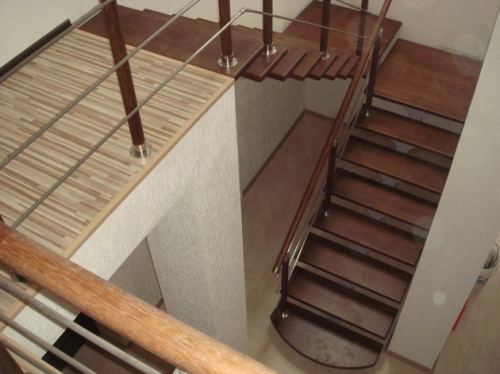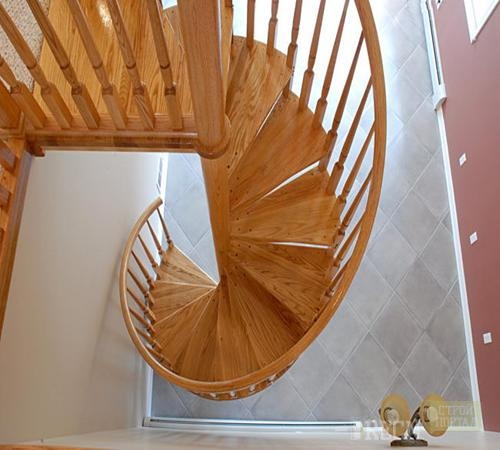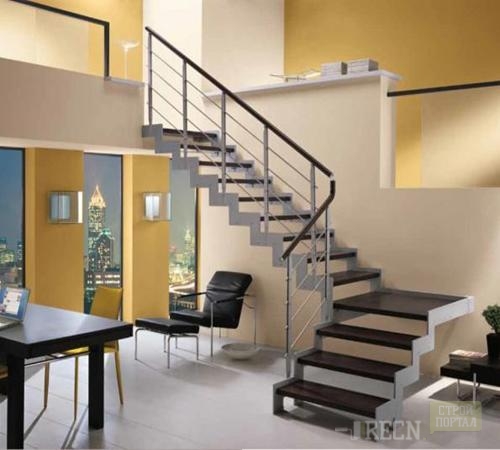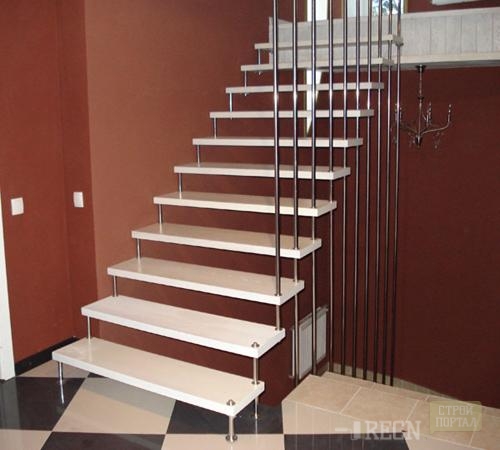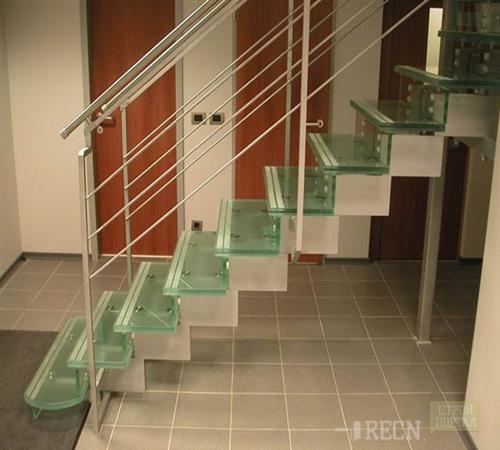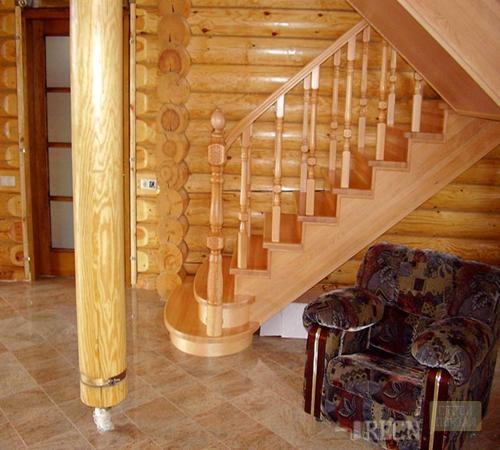
Types of stairs for home Ladder
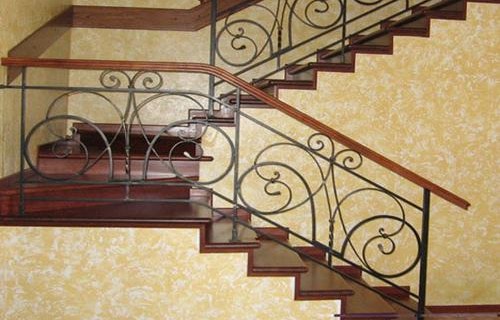
Recently, private houses with one floor are practically not built. Everyone wants to have a scope and rooms for each family member, therefore housing will be erected at least two floors. In this regard, there is a need to install a staircase, which will be available to the upper floors.
Content
Classification of stair designs
Types of stairs are very numerous. Choose one or another possible, relying on the design of the house, the needs of tenants, the number of floors and other factors. Stairs are classified as follows:
1. For purpose:
- connecting floors;
- leading to the entrance;
- passing;
- used.
2. According to the functions performed:
- orange;
- landscape;
- special purpose.
- internal;
- external.
4. By layout type:
- straight;
- with turns.
5. By use method:
- transformers;
- not moved;
- movered.
6. In structure:
- having one march;
- having two march;
- having a lot of marches.
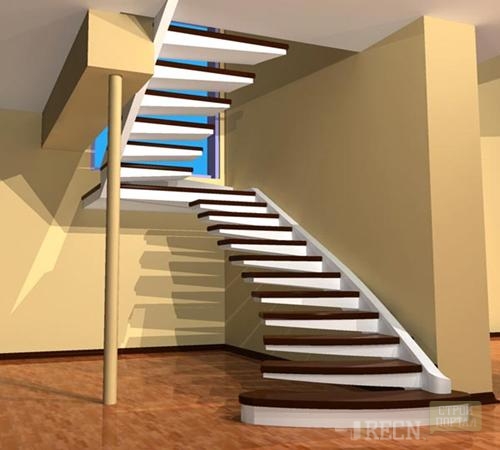 7. According to the material, the production of bearing parts:
7. According to the material, the production of bearing parts:
- various metals;
- reinforced concrete;
- wood;
- concrete;
- combination of several materials.
In addition to this stair construction, installed in homes, are divided into:
- screw;
- march;
- at the parodes.
Types of coil stairs
Screw structures are mounted in small rooms, because They require less square than straight. The calculation of the space occupied will not be difficult. Each stage has a length of 500 mm to 1 m. The minimum space that the installed design requires from 1 to 2 m, i.e. twice as much. Screw stairs are not the most convenient in installation and operation, but they allow you to save territory. Most often they are used as auxiliary - allow you to get into the basement or attic room. May have a different form, for example, in the form of a circle, square, octagon, etc.
These designs are arranged as follows: in the middle there is a support, a wooden pillar or a metal tube, and wedge-shaped steps are attached to it. Their opposite edge rests on the wall or to balusters. The wide side of the stage is fixed on the rack railing.
By stopping your choice on the screw staircase, you must consider some nuances:
- for a comfortable and safe lift on it, the width of the middle part should be at least 200 mm. The width of the edge, resting in the wall, should not exceed 400 mm;
- this design is best made wooden or metal;
- the spinning staircase should be located next to the bearing wall or the center of the room;
- because This type is not very convenient, then it uses it only when there is a small opening in the overlap;
- planning the installation, do not forget that the circular structure depends on the size of the opening.
Screw staircases also have their own classification, they differ by:
1. In the form:
- round. They are usually installed in the center of the room;
- polygonal. For even greater savings, places are installed near the wall.
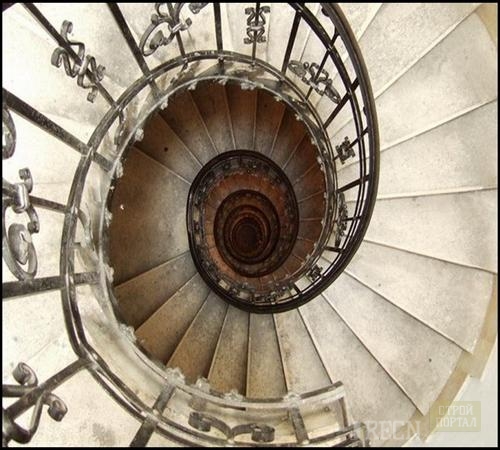 2. According to the design features:
2. According to the design features:
- stages are based on the wall;
- stages are based on the rack;
- stages are relying on fencing or curved theettes.
If the support rack is used, the design may have such features:
- disposal is pinned in the rack;
- apartment relies on the rack.
Varieties of marching stairs
Stairs consisting of marches are very popular thanks to their convenience. Most often they are chosen for spacious premises. The calculation of this design is made like this: in the place where it will be mounted, the floor and the height of the wall are measured. Next, a triangle with a straight angle is drawn, where the sides of its components are the floor and wall, and the third side is a staircase.
Nuances relating to the marching stairs:
- as can be seen from the name, they are composed of marches;
- those, in turn, composed of a certain number of steps, as a rule, from 3 to 15 each. Such a norm is designed to use the staircase as convenient as possible;
- if marches consist of more than 11 steps, then there are platforms between them.
Marsh stairs are classified as follows:
1. According to the presence of risers:
- closed. Designs are equipped with risers;
- open - the risers are absent.
2. According to the method of fixing steps:
- with Kosomers. The step is stacked on the Kosooge beam, and the end is mounted in the risers. The stairs with Kosomers look best if they are made of wood and perfectly harmonize with the style of the country;
- with the assets. Large structures of 2 m wide. Testa are inclined beams passing along the entire length of the march.
- having one march;
- having two march;
- having a lot of marches. Their quantity depends on how many floors in the house, which layout have the premises, for which they will serve, etc.
4. By configuration:
- straight. Such type of stairs is simple in production and installation, it is distinguished by strength, convenience, practicality;
- swivel. If a staircase has more than 10 steps, then there is a platform between marches. In this case, the design will be swivel. Such stairs require less territory than direct. They are located near the walls, and under them usually set up storerooms.
Stairs with a turn are divided into:
- semi-turn - turn is 180 °;
- circular - turn is 360 °;
- quarter-turn - turn is 90 °.
Designs at Bolzakh
The word "bit" translated from German to Russian means pin, bolt. These fasteners act as a support that holds the design. Steps together with the fence are fixed by the forces on the wall. And sometimes the staircase rests on steel rods. The stairs of this type are compact, air, seem elegant and little weighing.
One edge such a design is necessarily adjacent to the wall. This type of stairs is very widespread due to its strength and reliability, along with external ease and aesthetics. They do not prevent the penetration of light into the room.
Nuances that need to know:
- bolts are fixed with rubber, specially intended gaskets;
- these stairs do not have a boom or the tesies, their distinctive features are beautiful curvilinear railing.
What staircases do
Determining with the material for the future design, it is better to give preference to more durable, not fear of moisture, scratches and chipping, the actions of chemicals and dirt. Along with its strength qualities, the material must also be environmentally friendly, so as not to harm the health of people.
In the manufacture of stairs, the following materials use the greatest demand:
- various metals. Stainless steel - durable, irrevocated corrosion material, which has a long service life, sometimes until half a century. Designs made of chrome steel "live" up to 5 years, and painted - up to 3 years. Brass with time darkens, and aluminum is prone to deformation;
- wood. There are wood breeds that differ in hardness and moisture resistance, as well as not afraid of mechanical damage. Since this material is very popular, the types of wooden stairs are very diverse. Almost all existing models can be made of wood;
- glass. The glass steps of stairs look very effectively, but in strength and practicality are inferior to previous species. With a strong blow to the end, it can be cracked even tempered glass, besides, it remains scratches;
- stone. Steps, both from natural and artificial stone, are distinguished by strength and can serve hundreds of years. This applies to quartzite, granite, as well as concrete-based stone. Natural marble is better not to apply, because After 2 years of operation, it is strongly engaged.
From the foregoing it follows that the types of stairs to the second floor are distinguished by a variety of materials and forms. Also, not last place is the aesthetic side of the issue. Everyone wants that in his house, a staircase is installed in his style and color scheme. Top view, bottom, and also from the rest of the angles should not disappoint, so when choosing a structure for your home, it is best to contact a specialist - designer, decorator.
For those who want to navigate among numerous types of stairs, photos and videos on this page will be a visual illustration.




